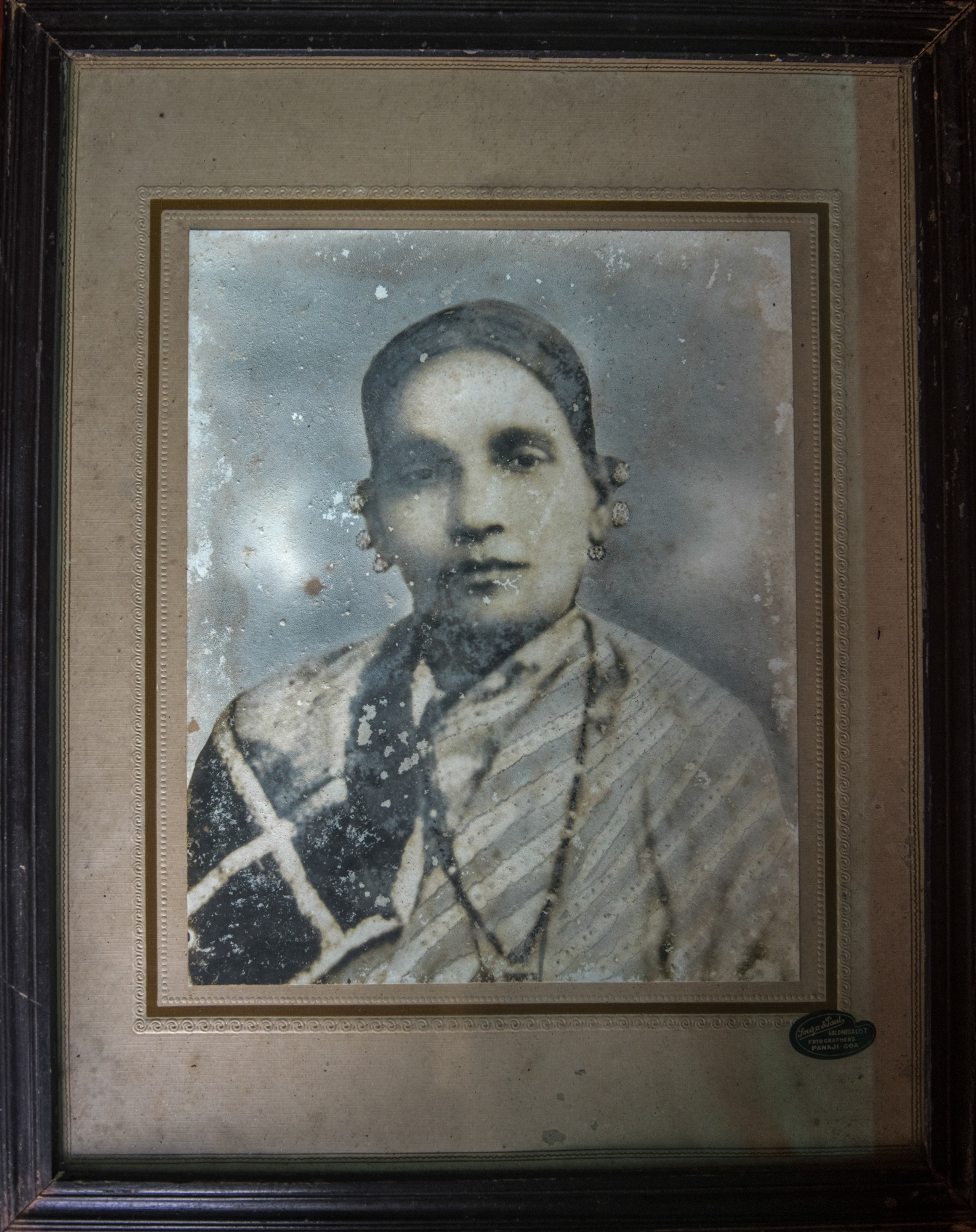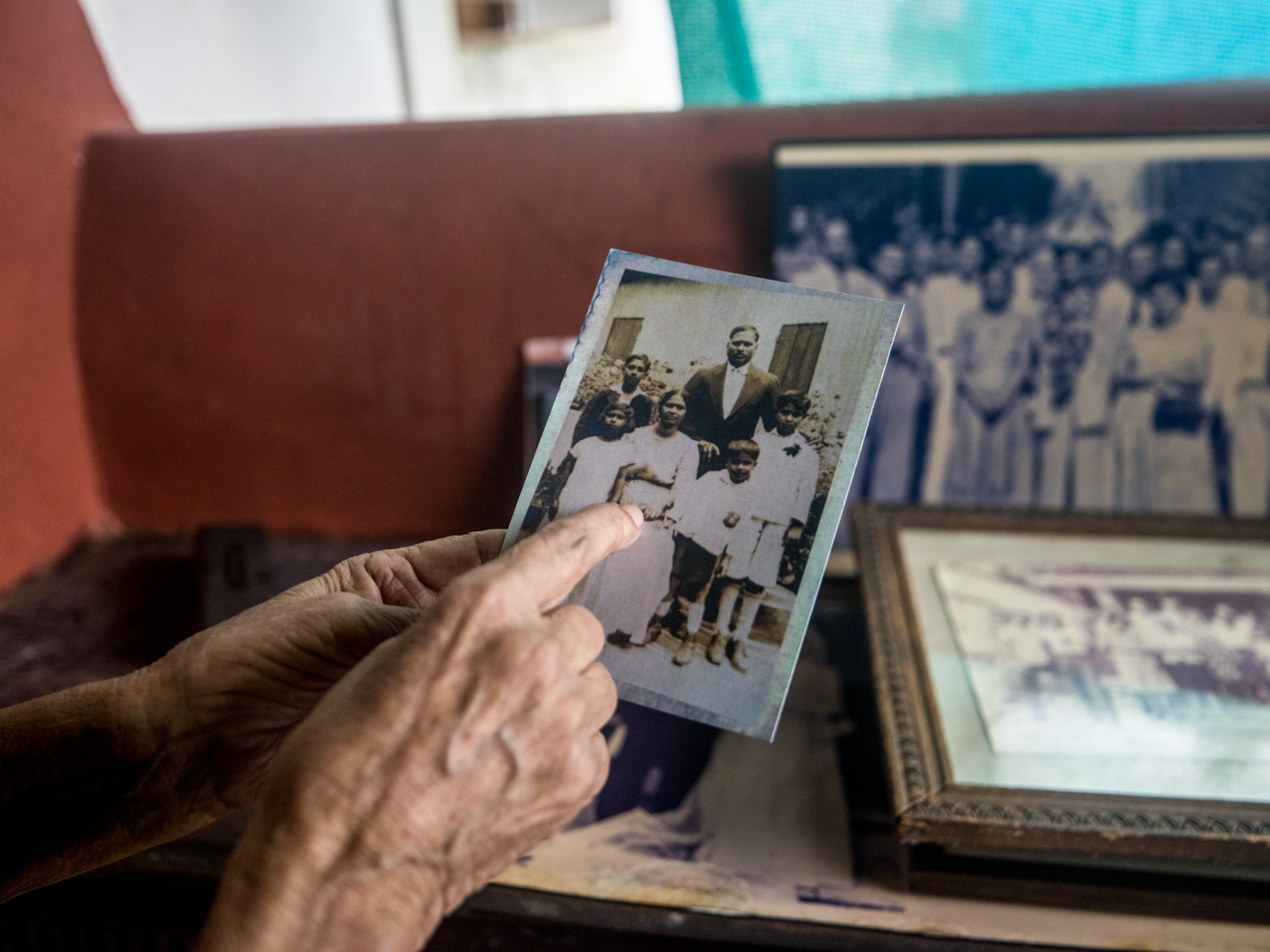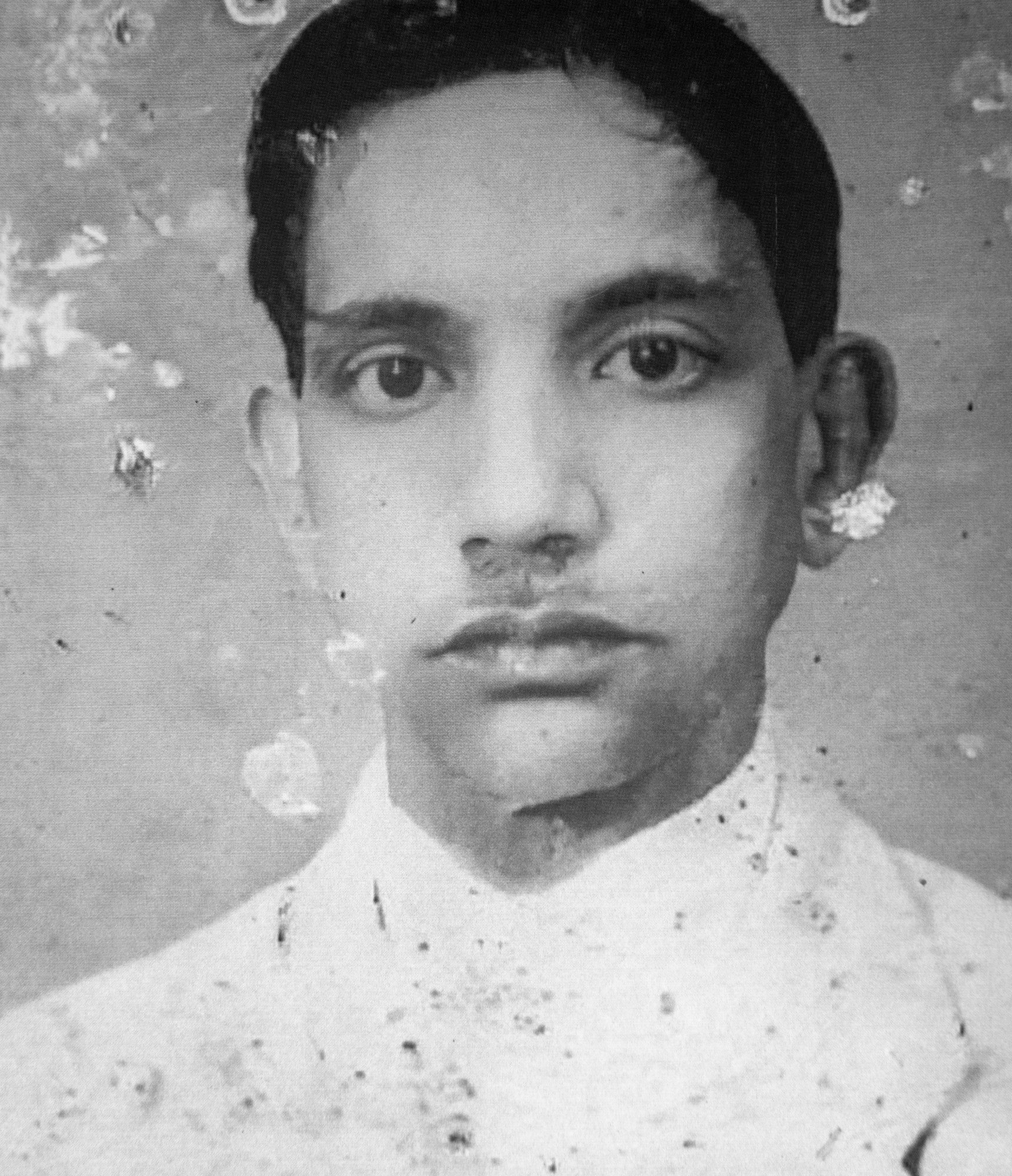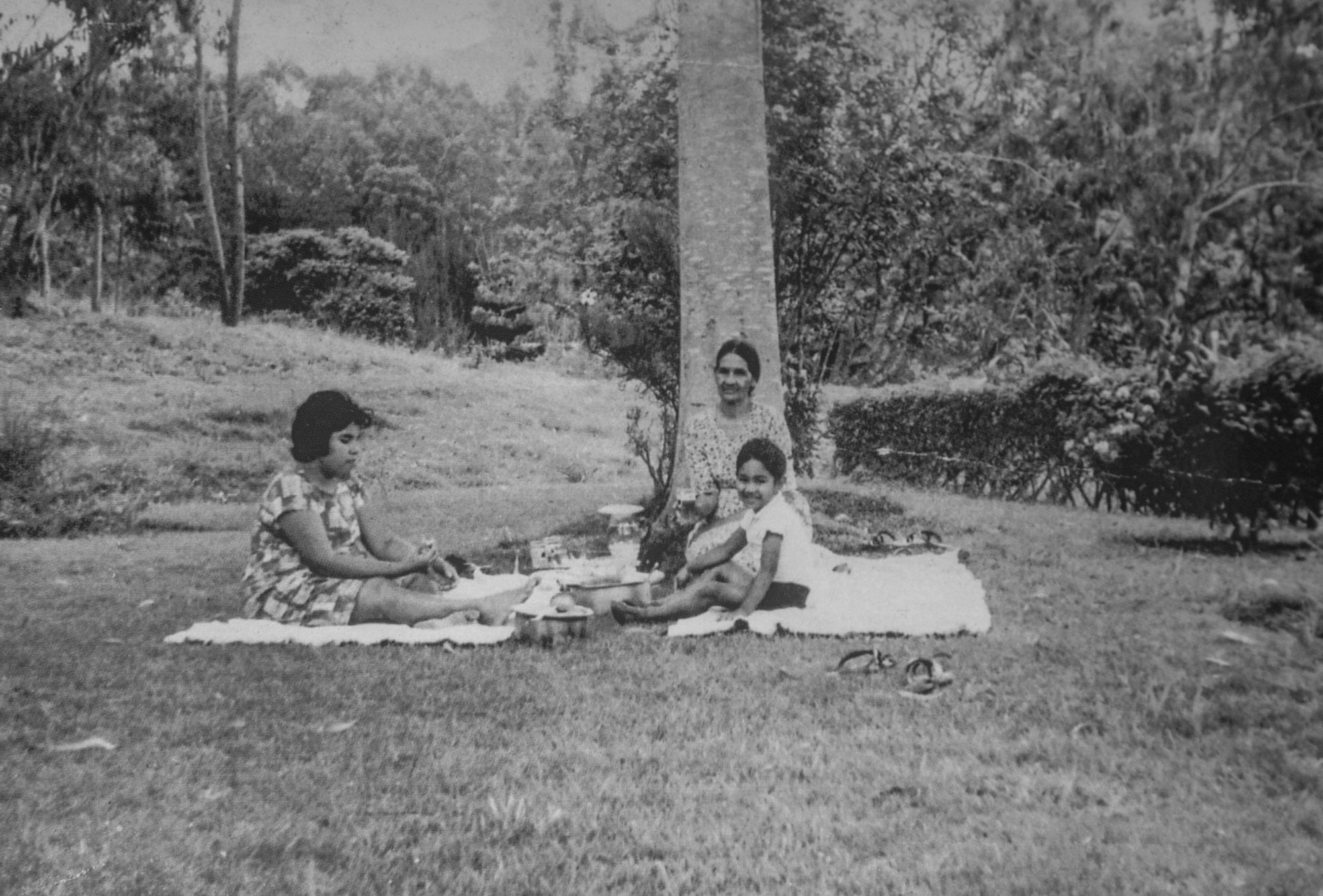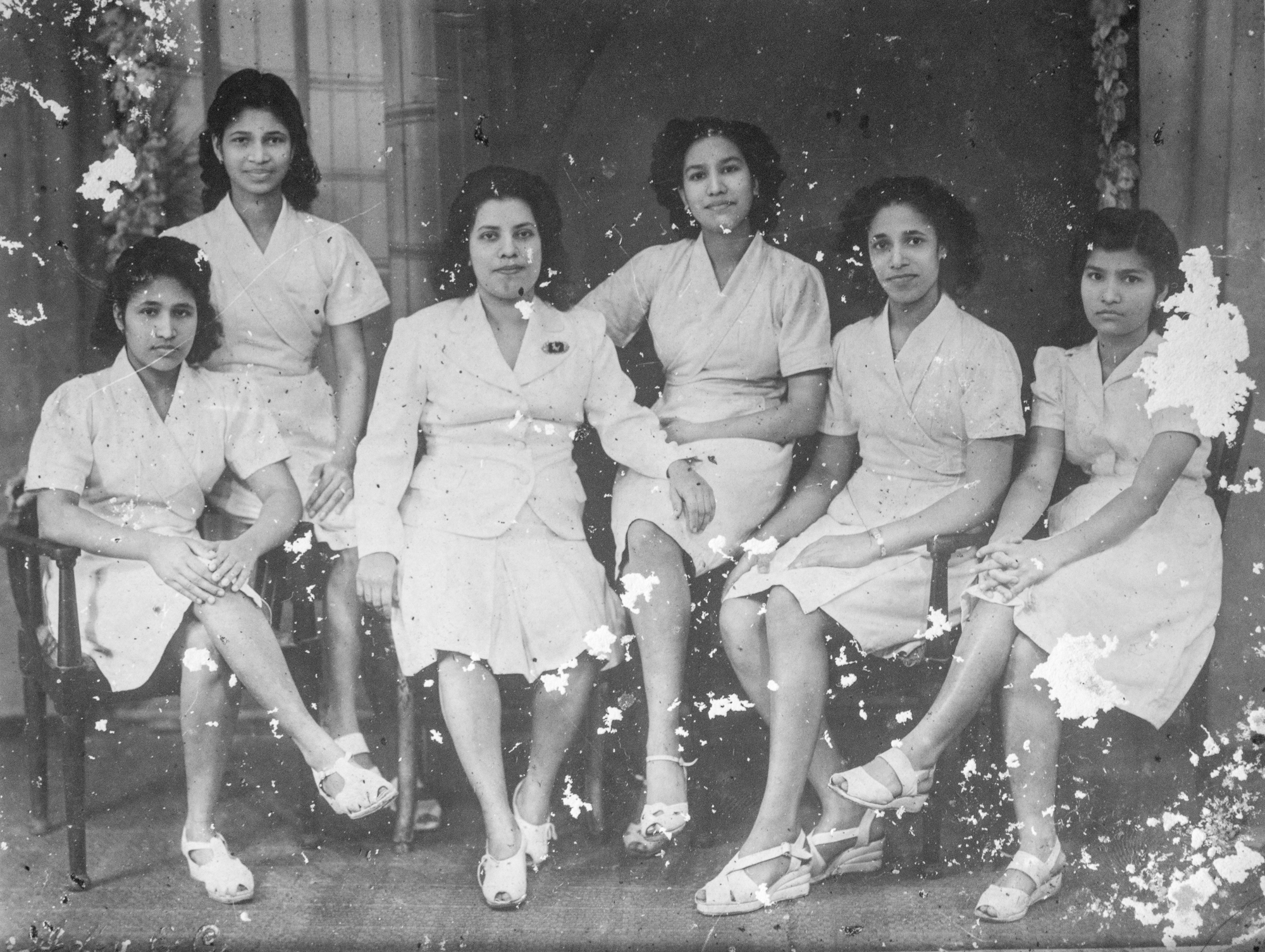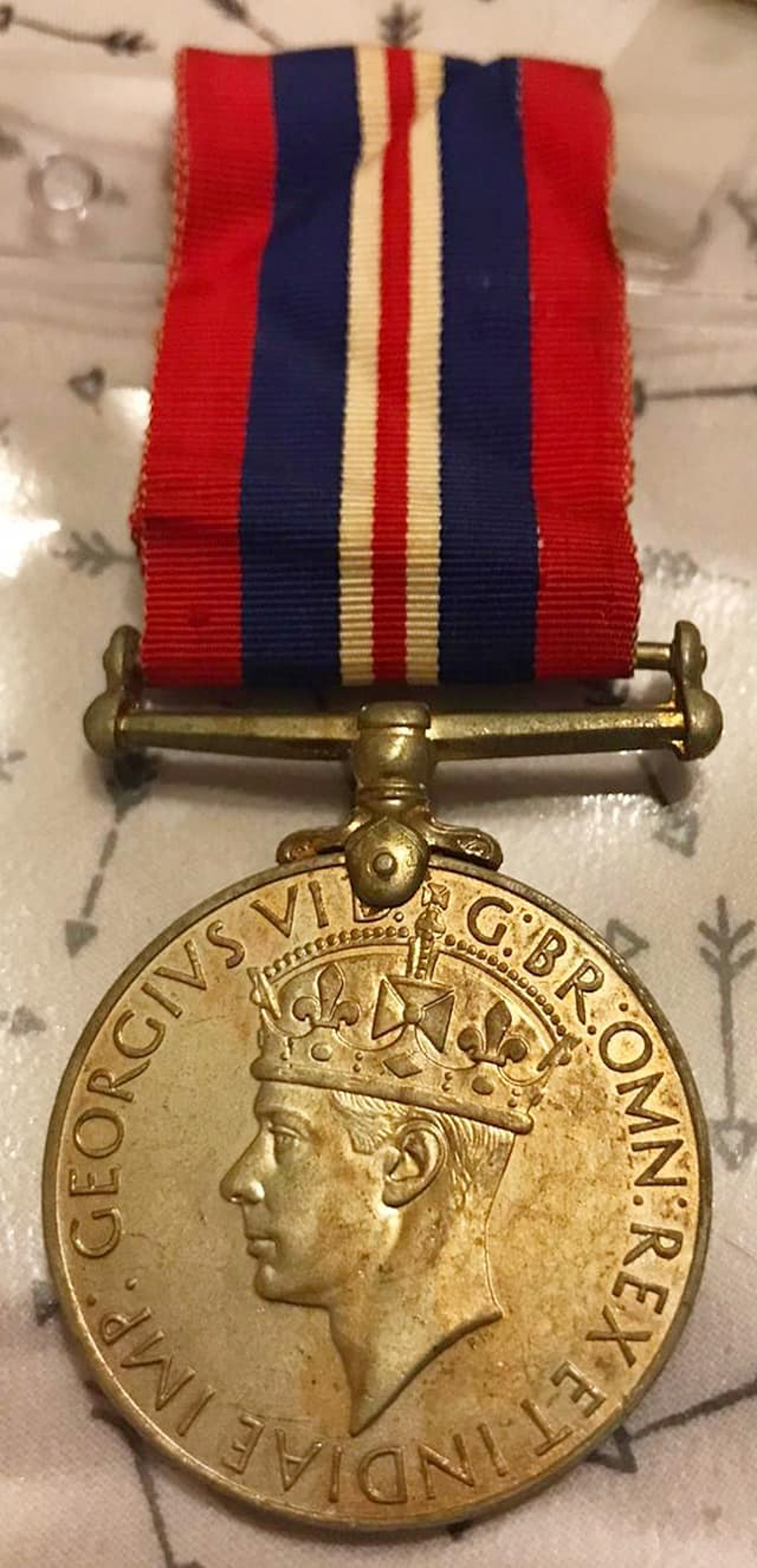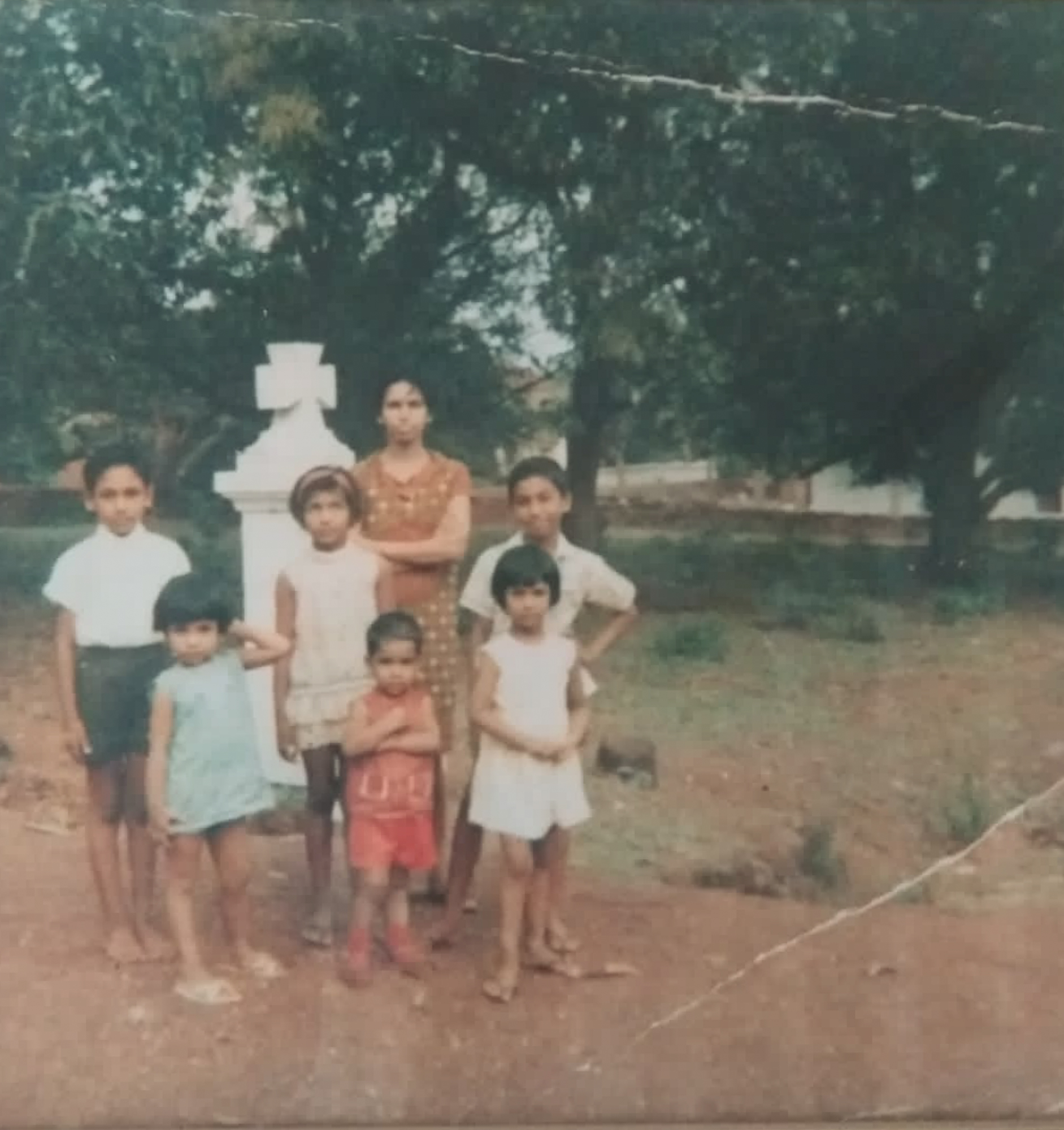ANTONETTA FERNANDES sits on her sunny balcão at midday, sharing time with neighbours and friends who pass by through the steep but picturesque lanes of ‘Amboi Vaddo’, called so because of the rows of heritage mango trees. A frail but resolute figure at 88, she still abounds with energy and displays a formidable mind, remembering and rendering old mandos learnt in her youth, and retelling in great detail, stories of her life experiences and anecdotes of those connected to her.
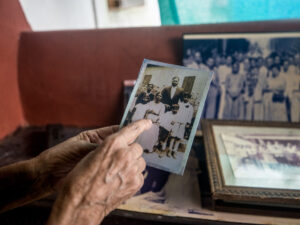
“Antonetta recalls stories” P/C Goa Familia 2019
She began her life in St. Mathias, and after a journey between three continents, she finds herself in St. Mathias again, living in her ancestral home along with her son Marius Fernandes. Photographs from old albums bring back her memories in a rush; names of people and places, events and celebrations, births, deaths and weddings – strings of stories fill the air with the resonance of the past, and age is no barrier for her to be transported through time and space from within the frame of a photograph.
Part I Salvador do Mundo
Antonetta “Anna” Regina was born in St. Mathias, Divar island, on 21st September 1932, to Luis Matias D’Souza and Carolina Rodrigues. She was one of six siblings, a bright and intelligent girl. The family had to move inland to Salvador do Mundo (Saloi), Bardez, in order to get away from the sickness that was ravaging parts of the region, including Divar. She recalls her grandmother Ana Joaquina Rodrigues often telling her about the frightening effects of the plague and how Salvador do Mundo hill was the site of an unofficial cemetery where bodies were dumped. It was this hill which Antonetta climbed to gather the cashew fruits, season after season.

“Portrait of Anna Joaquina Rodrigues, grandmother of Antonetta” approx. date: 1910-1920
Antonetta recalls the adventure that her father Luis Matias D’Souza experienced which seemed like a precursor to the Titanic. D’Souza worked as a doctor’s assistant on the RMS Lusitania, a British ocean liner and on 7 May 1915, the liner, travelling from New York to Liverpool, was hit by a torpedo fired from a German U-boat. The ship sank off the southern coast of Ireland, killing approximately 1,260 passengers and crew, including 94 children. The sinking presaged the United States declaration of war on Germany.
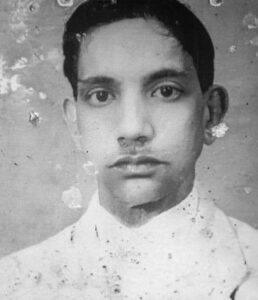
“Portrait of Luis Matias D’Souza, father of Antonetta” Approx date early 1900s
Incredibly, her father survived this horrific incident along with a few others who were rescued in a submarine, and he arrived back in India, even though the ordeal affected him physically and mentally. Previously, he had also been employed in the New York Coast Guard. The family received a letter with a medal for him to their Salvador do Mundo address sometime in the 1970s
From 1940-45, Antonetta studied along with her sister Bertha at an English medium institution, the Divine Providence girls’ school in Belgaum. At that time schools in Goa only taught in Portuguese or Konkani. Back in Salvador do Mundo, Antonetta had to learn many skills during her teenage years, including sowing and harvesting vegetables and grains, as it was the need of the hour. In her youth she was also very active in the Church and all its works, and she later became president of the Acção Católica de Goa (Catholic Action Group), a position that was usually reserved for men. It was through her work with the Church that she was introduced to Konkani Tiatr and showed great talent in her participations. In the next episode of her life, with the serendipitous connection of a matchmaker, her marriage was fixed with Bernard Mathias Fernandes, an Afrikander on a trip to Goa who had rejected many prospective brides before he finally saw Antonetta. The wedding was solemnised at the Basilica of Bom Jesu, in May 1958, with the help and support given by her elder sister Christine (Vas) who was then working in Bombay at her cousin Luiza Marie Noronha’s famous beauty salon “Primo’s in Byculla”. Choir Master Amien D’Souza of the Catholic Action Group wrote congratulatory verses and gifted it for her wedding. Shortly after this she moved to Kenya where her husband’s family had their business. The journey in those days was a long and tedious one made by steamer, by way of Mormugoa port to Mombassa.

“Wedding photograph with the Verse gifted by Amien D’Souza”
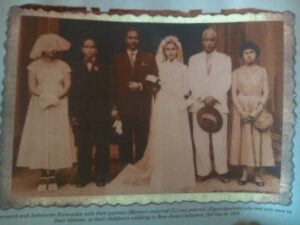
Wedding Group photograph, the only time the in laws were all together with Antonetta and Bernard” May 1958
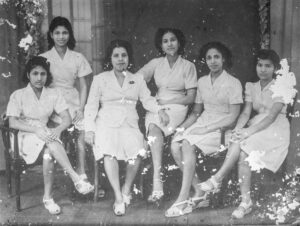
“Christine Vas (Antonetta’s elder sister) seated third from right, and on her right her cousin, owner of Primo’s salon, Luiza Marie Noronha, with other employees in Bombay”
Part II Kenya
The connection to Kenya was established by Antonetta’s husband Bernard Mathias’s father Mathias Xavier ‘M.X.’ Fernandes (with the family nickname ‘Grao’ from his village) who left the island of Divar, Goa in the early 1910s, apparently as a stowaway on a boat, and reached Kenya to find his fortune. He travelled extensively in the remote areas of the country and set up a general store and bakery in the town of Eldoret. An enterprising man, he also had a brewery in Isiolo, Kenya. In the 1950s the family lived through the Mau Mau uprising, a fight for freedom from the British in which many Goans were involved. Antonetta’s mother in law, Marie Emilia Fernandes, later had nightmares reliving the horrors of beheading and hanging that were a common sight. M.X Fernandes died in 1961 leaving behind a legacy.
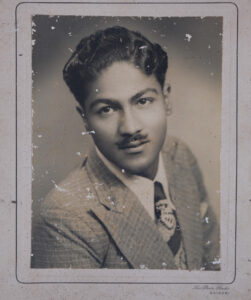
“Portrait of Bernard Mathias Fernandes, The Photo Studio, Nairobi”
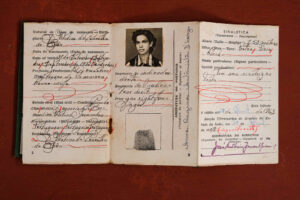
“Antonetta’s passport and travel document”
Bernard followed in his father’s footsteps and set up general stores wherever he moved in Kenya including in Laare and Kindaruma. After her arrival in Kenya, Antonetta began work at the shop straight away. The home was attached to the shop and she would manage both; the shop sold a variety of everyday utilities like bread, oil, sugar, ‘mawa’ (a local leaf like betel), clothes, and other essentials. Antonetta used to stitch clothes too and these were displayed on hangers in front of the shop in Laare.
Four of her five children – Marius Mathias Francis, Edgar John Vincent, Genevieve, Maria Goretti and Maria Fatima – were born in Kenya except the last, Mathias Xavier who was born in Goa. They grew up in a disciplined atmosphere of hard work and it was compulsory for the siblings to speak Konkani at home.
The Somali insurgency in the early 1960s along the Kenyan border created a situation of conflict for some time. The family decided to move back to Goa in 1967 where they remained until 1976. Here Antonetta was again deeply involved with the local community in Divar with keen interest in cultural activities.
Part III United Kingdom
One balmy day in 1976, the family set off to Leicester in the UK, via Bombay airport. This was a period when many families of Goan origin earlier living in East African nations like Kenya, Tanzania and Uganda took the opportunity to move to the UK for better prospects. This was an exciting and creatively fulfilling period for Antonetta.
Always oriented towards conserving her native culture, she was approached by Goan association to teach children Konkani language at home. She was instrumental in creating the platform for Konkani to make history in the UK, when she brought the legendary Tiatrist Alfred Rose and his troupe to London. The event held on the 9th of March 1986 at Harrow, England with a spectacular line-up of stars from the Konkani stage: Alfred Rose, Rita Rose, C. Alvares, Titta Preeto, Engelbert Rose, Tony Martins and others. It had turned out to be a monumental task of communication, organisation, coordination and hosting, but the Grao family from St. Mathias, Divar island, Goa beat all the odds and achieved it. There were three jam packed shows with an audience of a thousand Goans from all over England mainly migrated from East Africa. The first of its kind, the event opened up opportunities for future tiatrists in the UK and Europe.
Antonetta remained in Leicester until 1999, when her son Marius decided to move back to Goa and she returned with him. He is now known fondly as the ‘Festamkar’, and followed in her footsteps, working on reviving local culture and build awareness of tangible and intangible heritage by creating community festivals.
Following her cross-cultural journey from Divar, through Africa, Goa and England, back to Goa again, one of the greatest experiences is that of the value of family connections and memories that Antonetta created jointly with others. Her Goan heart and deep commitment and love for her roots remained steady no matter where she went or in which city she lived.
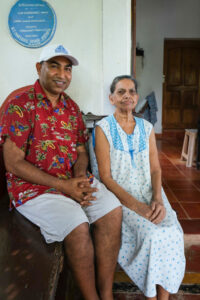
Marius and Antonetta at home, Amboi Vaddo, St Mathias Divar – P/C Goa Familia 2019
Compilation – Lina Vincent
Images Courtesy The Fernandes Archive, São Matias, Goa. See the entire collection here

